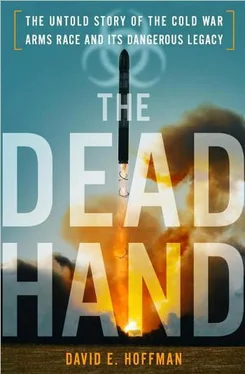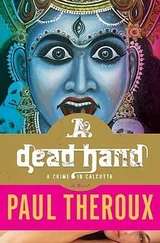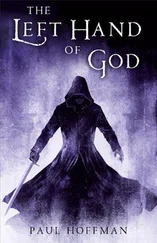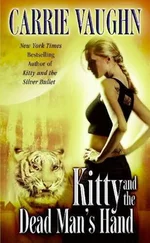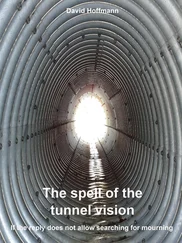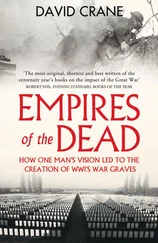In the end, Gorbachev ran out of time. By late 1991, the radical reformers around Yeltsin were determined to make the leap toward free markets and destroy the Soviet state. In a landmark speech October 28, Yeltsin said he would set prices free, and pledged “deep conversion,” shutting down defense enterprises altogether and converting others totally to civilian purposes. The new market system, just taking shape, injected yet another wild card into the chaos of the reverse arms race. For decades, the sprawling military-industrial complex was dependent on the state, fed subsidies from the center and protected by the Communist Party. Factory bosses did not worry about prices, markets or efficiency. But now, they had to rethink everything: not only how to reengineer themselves to construct a washing machine, but how to accomplish it in an entirely different and unfamiliar economic system, without subsidies and without the godfathers of the party. The CIA produced a classified report in early October that captured all the doubts: “Soviet Defense Industry: Confronting Ruin.” 32
On a freezing day in the remote industrial city of Perm, William F. Burns got a glimpse of the reality, and it was not promising. A retired army major general, Burns had served as an arms control negotiator, and later director of the Arms Control and Disarmament Agency at the State Department. 33In December 1991, the National Academy of Sciences sent him to examine Soviet defense factories and evaluate their potential for conversion. “The whole point was to see if this was an irreversible transition, or whether it was just sort of a sideline,” he said. Burns toured a decrepit former munitions factory in Perm where the managers were trying to manufacture bicycles. Inside the U-shaped building, low-wattage electric lightbulbs hung from the ceiling, the factory floor was cold, workers were dressed in winter clothes, wearing gloves with their fingers protruding, as bicycle parts moved about on a conveyor that used to hold 203-mm artillery projectiles.
As Burns recalled later, the factory manager didn’t have a clue what would happen to the bicycles. Rather plaintively, he asked Burns if they might sell in the United States. Burns thought to himself the primitive bicycles looked like his own bike when he was eight years old in 1940. “He was trying to be a western businessman,” Burns recalled of the manager, “but he didn’t know the language.”
Burns asked what price the manager would set for the bicycles. “Three hundred eighty rubles,” he replied.
“How did you arrive at the price?” Burns asked.
“Well, I did it the capitalist way,” the manager replied. “I added up the cost of production. I added up the wages and divided by the number of bicycles. It comes to 380 rubles.” He smiled, Burns recalled, pleased with himself.
“Well, how about investment?” Burns asked.
“Investment?” the manager replied. “What is investment?”
“What about profit?” Burns asked. “If you are trying to run a business the capitalist way, then profit is a very important thing.”
“How do you calculate the profit?” the manager asked. 34
At Obolensk, Sergei Popov sat in his office, depressed. He had given the system years and years of his best efforts, but by 1991, government funding was running out. Salaries were paid late, or paid in kind with sugar, or eggs from a local poultry farm. Biopreparat was no longer isolated from the economic collapse in the rest of the country. The scientists were told by the government to convert to civilian research.
Popov felt fortunate that his laboratory could generate some ideas for projects beyond biological weapons, but he knew others who could not. “It was just impossible if you dealt with anthrax or plague weaponization,” he remembered. “What could you suggest would be the practical purpose?” Popov joined a cooperative, the pioneering, small private businesses created by Gorbachev’s reforms. They developed a microbial powder for veterinary use, using the facilities at Obolensk. Instead of growing plague or other pathogens, they cultivated intestinal bacteria and sold it as a supplement to cattle and chicken feed. They made a profit right away, since their overhead was free. Popov also created a new variety of interferon that could boost the immune system response against viruses. “We found it could be a good additive to chicken feed, because chickens suffered heavily from viral infections,” he said. They could even aerosolize the preparation to spray whole poultry houses, just as they had considered doing with biological weapons. Popov applied for a patent.
In the laboratories, the weapons research lapsed into a twilight zone. It wasn’t stopped, but as scientists struggled to survive, they spent less time creating agents for the military. Popov said he was “almost completely refocused” on trying to make ends meet. “We were still under serious restrictions. We could not tell anybody what we did before. We could not disclose our secrets. But the overall situation was that nobody cared very much about it anymore.” Popov and his wife planted potatoes and vegetables, picked forest mushrooms and ferns. One winter day, wolves attacked and killed rabbits being kept for biological weapons experiments at the laboratory. The wolves didn’t eat the rabbits, just killed them for sport, and left an awful scene, spattered with blood. Popov gathered them up, skinned them and put them in the freezer to feed his family.
Then the chicken feed business collapsed. “It ended very suddenly because these farms had no money to feed chickens at all,” he said. “There was no sense adding anything to the chicken feed, because there was no money. It was a time of financial crisis, cash was in short supply, nobody paid anybody. There was a bank crisis and no honest business had a chance to survive. The cooperatives and those poultry farms went bankrupt simply because there was no means to pay, and no means to get a profit.”
Popov and his wife, Taissia, were desperate. “I realized that all my efforts were fruitless,” he said, “and I saw no future for myself.” She feared for their daughters, then seven and seventeen. “I realized there was no money to support the children,” she said. “I was scared. I said to Sergei, we need to do something.”
Twelve years earlier, when he had spent six months in Cambridge, England, Popov worked in the laboratory of a microbiologist, Michael Gait. In the summer of 1991, Gait came to Moscow for an international scientific conference and was delighted to see Popov again. Popov had driven all the way into the city to see Gait, and invited him to visit his home and meet his family. They headed south, driving an hour to Obolensk in Popov’s white Zhiguli car. As they approached the restricted zone around the institute, Popov warned Gait to be absolutely silent as they drove through the checkpoints. No one stopped them. They didn’t go to the institute, but to Popov’s apartment, where Gait enjoyed a meal with the family, sampling homemade brandy and listening to the Beatles. Gait recalled that the Popovs told him their money was drying up. Taissia was in tears. They asked for help in getting a postdoctoral appointment for Sergei in the United Kingdom. Gait promised to do everything he could. In the autumn, he received a letter from Sergei saying they were down to their “last sack of potatoes.” 35
Alibek finally got a chance to see America. At the last minute, he was added to the Soviet delegation making a reciprocal visit to the United States for the one in January to the Soviet Union by the British and American experts. (Davis and Kelly came, too, representing the United Kingdom.) For many years, the KGB had claimed there was a hidden U.S. germ warfare effort. Now Alibek could check for himself. The thirteen-member Soviet delegation arrived in Washington on December 11, 1991. The delegation also included Sandakhchiev, director of Koltsovo, and Urakov, director of Obolensk. They were two of the most important institute directors in the Soviet biological weapons program.
Читать дальше
